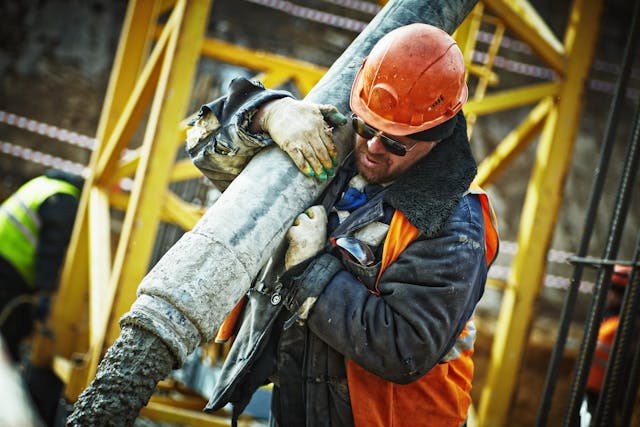Drug testing in construction: Australian legal requirements

Construction is one of the six most dangerous industries in Australia, which together account for 76% of all work-related traumatic injury deaths. Add drugs or alcohol to the mix, and construction becomes even more dangerous.
The Alcohol and Drug Foundation purports that construction has higher rates of workplace alcohol and other drug use than most other sectors.
The effects of drug and alcohol use in the workplace can disrupt team dynamics, compromise safety across the site, and lead to costly project delays. Businesses may face legal action, workers’ compensation claims, rising insurance premiums and long-term reputational damage – to say nothing of impacts to productivity and profitability.
That’s why having a clear, legally sound drug and alcohol policy is essential. It’s not about ‘ticking a ‘box, it’s about protecting your people and your bottom line. It also helps safeguard you should the worst-case scenario occur.
Drugs and alcohol are a real issue in construction
Whether they’re climbing scaffolding, operating machinery or undertaking site tasks, construction workers need focus, coordination and sharp decision-making. A worker under the influence simply can’t perform safely.
There are also factors that make this industry more vulnerable to drug and alcohol use, including long hours, stressful environments, remote jobs, social isolation and a culture that hasn’t always made space for open conversations about mental health or substance use in the past.
According to the Drug and Alcohol Review, “Male-dominated industries are more susceptible to risky alcohol consumption and its associated harms.”
The Review also cites Australian studies that found nearly 60% of construction workers were risky or hazardous drinkers. “Those in the industry are classified as blue-collar workers, where drinking patterns associated with short- and long-term alcohol-related harm are more prevalent than among white-collar occupations…” Co-workers drinking together after work is also regarded “as be an effective method for team building and increasing worker morale.”
Studies also show that drug use in this cohort is considerably higher than national averages. The construction industry (along with hospitality, and arts and recreational service sectors) demonstrate the highest prevalence of use of any illicit drug.
This means drug testing in construction is a really important conversation.
What the law says about drug and alcohol policies in construction
National requirements
At a national level, the Work Health and Safety Act 2012 says that employers have a duty to make sure their workers are safe—so far as reasonably practical. That includes tackling risks related to drugs and alcohol.
This means employers need to:
- identify the risks
- put measures in place to reduce them
- train staff
- and keep an eye on how it’s all working.
In September 2015, the Australian Government amended the Building Code 2013 to require compulsory drug and alcohol testing on certain construction sites, especially if they are commonwealth-funded sites.
If your site is high-risk or you’ve had incidents, then testing could be a very appropriate part of your overall safety plan, as employers have a responsibility to manage the hazards of drugs and alcohol in the workplace.
State-by-state differences
Some states have their own differences and Acts. In New South Wales and Queensland, for example, certain large or public infrastructure jobs might require a written alcohol and drug policy. In Victoria, the emphasis is more on risk control and consultation with workers.
Western Australia Work Health and Safety Act 2020
Victoria Occupational Health and Safety Act 2004
South Australia Work Health and Safety Act 2012
Queensland Work Health and Safety Act 2011
Tasmania Work Health and Safety Act 2012
Northern Territory Work Health and Safety (National Uniform Legislation) Act 2011
ACT Work Health and Safety Act 2011
In most cases, it comes down to the specifics of your project, location and contracts. Some clients, especially government bodies, expect formal testing policies on top of the legal minimum.
What happens if you don’t get it right?
Not managing drug and alcohol risks can lead to big consequences.
Your business might face fines or even prosecution. You could lose tenders, get taken off a project, or be barred from government-funded jobs.
According to the Alcohol and Drug Foundation, “Employers have a legal obligation to address alcohol and other drug issues in the workplace through the ‘duty of care’ provisions in the OHS Act 2011. It requires employers to take all reasonable and ‘practicable’ steps to ensure the health and safety of all their workers and any other people who may be affected, such as contractors or clients.”
If a worker gets hurt and drugs or alcohol are involved, you might also face increased compensation costs or a legal claim. And then there’s the reputational hit, which can be hard to recover from.
Alcohol and drug testing in construction is about more than compliance. When you put the right policy and procedures in place, you’re not just protecting your workers and projects, you’re building a workplace where safety and support come first.
At AusHealth Diagnostics, we can help review or create your policy as well as uphold it by providing onsite alcohol and drug testing services, with specialisation in the construction industry. Let’s talk today.
